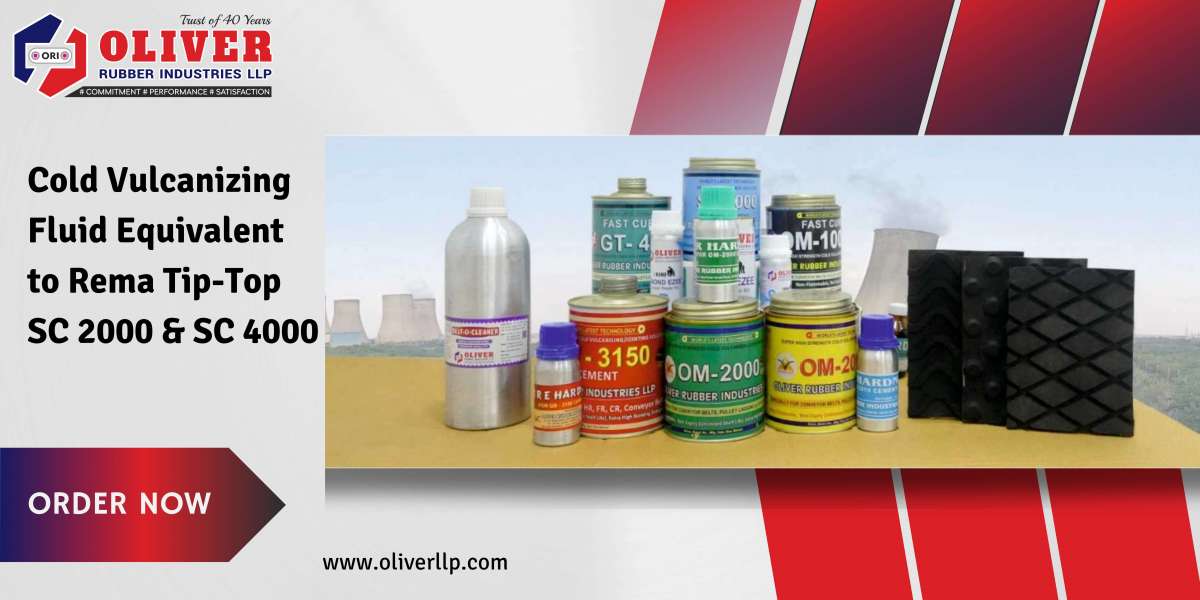Conveyor systems are the backbone of many industries, enabling the smooth and efficient movement of materials across production lines, warehouses, and distribution centers. Whether in manufacturing, mining, or logistics, these systems play a critical role in ensuring operational continuity. However, like any mechanical system, conveyors require regular care to perform at their best. This is where Conveyor Maintenance comes into play—a proactive approach to keeping your equipment running smoothly, minimizing downtime, and extending its lifespan.
At Oliver Rubber LLP, we take pride in being one of the foremost manufacturers of high-quality rubber sheets in India. With our commitment to excellence and innovation, we have established ourselves as a trusted name in the industry. Our extensive range of rubber sheets caters to diverse applications across various sectors, including automotive, construction, industrial, and more. These rubber sheets are often integral to conveyor systems, providing durability and resilience to belts and other components. In this blog post, we’ll dive into the essentials of Conveyor Maintenance, offering practical tips to keep your systems in top shape.
Why Conveyor Maintenance Matters
Conveyors are subjected to constant wear and tear due to heavy loads, friction, and environmental factors like dust, moisture, and temperature fluctuations. Without proper upkeep, small issues can escalate into costly repairs or even complete system failures. Regular Conveyor Maintenance ensures optimal performance, reduces the risk of unexpected breakdowns, and enhances workplace safety. For businesses relying on conveyors, investing in maintenance is not just a choice—it’s a necessity.
At Oliver Rubber LLP, we understand that every customer has unique requirements. That’s why we offer customizable solutions to tailor our rubber sheets according to your specific dimensions, thickness, hardness, and other parameters. These tailored products can significantly improve the longevity of conveyor components, making maintenance easier and more effective.
Key Components to Monitor
To master Conveyor Maintenance, it’s essential to understand the key components of a conveyor system. Here are the primary areas to focus on:
- Conveyor Belts
The belt is the heart of any conveyor system. Made from materials like rubber, fabric, or metal, belts endure significant stress. Inspect them regularly for signs of wear, such as fraying, cracking, or stretching. At Oliver Rubber LLP, our high-quality rubber sheets are designed to reinforce conveyor belts, offering excellent resistance to abrasion and impact. - Rollers and Idlers
Rollers support the belt and facilitate smooth movement. Check for misalignment, excessive noise, or seized bearings, as these can disrupt operations. Lubrication and timely replacement of worn rollers are critical steps in Conveyor Maintenance. - Pulleys
Pulleys drive the conveyor belt and must be kept in good condition. Look for slippage, misalignment, or material buildup, which can reduce efficiency. Regular cleaning and tension adjustments will keep pulleys functioning optimally. - Bearings
Bearings reduce friction in moving parts. Over time, they can wear out or become contaminated with debris. Routine lubrication and inspections will prevent premature failure. - Motors and Drives
The power source of the conveyor, motors, and drives should be checked for overheating, unusual vibrations, or electrical issues. Keeping these components clean and well-maintained ensures consistent performance.
Essential Conveyor Maintenance Practices
Effective Conveyor Maintenance involves a combination of routine inspections, preventive measures, and timely repairs. Here’s a step-by-step guide to get you started:
- Daily Inspections
Begin each day with a visual and auditory check of the conveyor system. Listen for unusual noises like grinding or squeaking, and look for signs of wear, leaks, or debris buildup. Catching issues early can prevent major disruptions. - Cleaning
Dirt, dust, and spilled materials can accumulate on belts, rollers, and pulleys, leading to inefficiencies or damage. Regular cleaning with appropriate tools and solutions will keep the system running smoothly. For rubber-based components, our products at Oliver Rubber LLP offer easy-to-clean surfaces that resist sticking. - Lubrication
Moving parts like bearings and rollers require proper lubrication to minimize friction and wear. Use the manufacturer-recommended lubricants and adhere to a consistent schedule. - Tension Adjustment
A belt that’s too loose or too tight can cause slippage or excessive strain. Check the tension regularly and adjust it according to the system’s specifications. - Component Replacement
No matter how well you maintain your conveyor, some parts will eventually wear out. Replace damaged belts, rollers, or bearings promptly to avoid compromising the entire system. Our customizable rubber sheets at Oliver Rubber LLP are perfect for replacing worn-out conveyor belt sections. - Alignment Checks
Misaligned belts or rollers can lead to uneven wear and reduced efficiency. Use alignment tools to ensure all components are properly positioned.
Benefits of Professional Conveyor Maintenance Services
While in-house maintenance is valuable, partnering with experts in conveyor maintenance services can take your upkeep to the next level. Professional technicians bring specialized knowledge, tools, and experience to diagnose and resolve complex issues. They can also provide tailored maintenance plans based on your conveyor’s usage and environment.
At Oliver Rubber LLP, we collaborate with businesses to ensure their conveyor systems benefit from our high-quality rubber products. Whether you need durable belts or custom components, our solutions integrate seamlessly with conveyor maintenance services to optimize performance.
Common Mistakes to Avoid
Even with the best intentions, maintenance efforts can fall short if certain pitfalls aren’t addressed:
- Neglecting Regular Checks: Skipping inspections might save time initially but can lead to costly repairs later.
- Overlooking Training: Ensure your team understands proper maintenance procedures to avoid errors.
- Using Incorrect Parts: Always use components that match your conveyor’s specifications. Our customizable rubber sheets at Oliver Rubber LLP are designed to meet exact requirements, ensuring compatibility.
The Role of Quality Materials in Maintenance
The longevity and efficiency of your conveyor system depend heavily on the quality of its components. High-grade materials, like the rubber sheets produced by Oliver Rubber LLP, offer superior resistance to wear, chemicals, and extreme conditions. By incorporating these into your conveyor, you reduce the frequency of repairs and enhance overall reliability.
Conclusion
Conveyor Maintenance is an ongoing commitment that pays off in the form of reduced downtime, lower repair costs, and improved productivity. By focusing on key components, adopting consistent practices, and leveraging professional conveyor maintenance services, you can keep your system running at peak performance. At Oliver Rubber LLP, we’re proud to support this process with our top-tier rubber sheets, tailored to meet the unique needs of your conveyor applications. With the right approach and resources, your conveyor system will remain a reliable asset for years to come.


